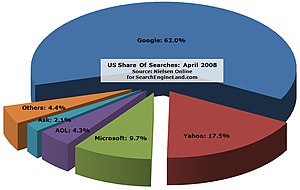By Carl Weiss
Want
to see something really scary? Well you don't have to prowl the streets on
Halloween in order to see the kind of things that give you goose bumps.
All you have to do is trawl the Internet's backchannels for an hour.
Once there you will discover creepy crawlies galore, including a search
engine designed for and by hackers, a black hat (not cat) convention in Las
Vegas and ghost sites that will creep you out. Below is our list of the top 10
scariest sites on line.
10.
What Happens in Vegas
 Around since 1997, the Black Hat
Convention held yearly at Caesar’s Palace in Las Vegas is the place where
hackers hang their hat. Interested in
learning how to carry out cyber-spying on cellphones? No problem.
Want to know what it takes to bypass traditional malware detection
measures. Piece of cake. This convention is a veritable candy store
where everyone from security experts to nerds looking to take down a small
government come to hone their skills.
After the now defunct Silk Road website the black hat convention is one
of the scariest in-your-face threats to cyber security that is not only officially
sanctioned but wildly popular. To quote
the BlackHat.com site,
Around since 1997, the Black Hat
Convention held yearly at Caesar’s Palace in Las Vegas is the place where
hackers hang their hat. Interested in
learning how to carry out cyber-spying on cellphones? No problem.
Want to know what it takes to bypass traditional malware detection
measures. Piece of cake. This convention is a veritable candy store
where everyone from security experts to nerds looking to take down a small
government come to hone their skills.
After the now defunct Silk Road website the black hat convention is one
of the scariest in-your-face threats to cyber security that is not only officially
sanctioned but wildly popular. To quote
the BlackHat.com site,
“Black Hat USA is the show that sets the benchmark for all other
security conferences. As Black Hat returns for its 16th year to Las Vegas, we
bring together the brightest in the world for six days of learning, networking,
and skill building. Join us for four intense days of Training and two
jam-packed filled days of Briefings.”
9. Don’t Want to Wait for the Movie?
Then read the book, Hacking for
Dummies, now in its 4th edition.
Why travel to Vegas when everything you need to start hacking can be
found online? This book is designed to
show you the ins and outs of what it takes to get started as a hacker.
As an
information security professional, your toolkit is the most critical item you
can possess — other than hands-on experience and common sense. Your hacking
tools should consist of the following (and make sure you're never on the job
without them):
·
Password cracking software, such as ophcrack and Proactive Password
Auditor
·
Network scanning software, such as Nmap and
NetScanTools Pro
·
Network vulnerability scanning software, such as GFI LanGuard and QualysGuard
·
Network analyzer software, such as Cain & Abel
and OmniPeek
·
Wireless network analyzer and software, such
as Aircrack-ng and CommView for WiFi
·
File search software, such as FileLocator Pro and Identity Finder
·
Web application vulnerability scanning
software, such as
Acunetix Web Vulnerability Scanner and WebInspect
·
Database security scanning software, such as SQLPing3 and
AppDetectivePro
·
Exploit software, such as Metasploit
8. Want to Know How the World Will
End?
Just in case the specter of
cyberterrorism doesn’t put the fear of God into you there’s a website called
Exit Mundi, that catalogs dozens of ways in which the world as we know it could
meet its end. Everything from asteroid
strikes to gamma ray bursts, to nuclear terrorism, to a drug that would render
the human population certifiably insane (too late) is described in detail on
this site. So if there isn’t enough
stress in your daily grind, here’s the place to help you ring the bell the next
time you get your blood pressure tested.
7. Alien Abduction Sites
| UFOs: Seeing Is Believing (Photo credit: Wikipedia) |
beyond the solar system. We’re talking alien abduction here and there are a number of websites devoted to this phenomenon. Googling “Alien Abduction Sites,” returned 7,580,000 results. So despite government denials, this is a hot topic. Scanning the first few pages of the results I noted everything from a wiki where you could share your abduction recollections(en.wikipedia.org/wiki/Alien_abduction) to the International Center for Abduction Research, http://www.ufoabduction.com/ which offers information that offers "Straight Talk About UFO Abductions"
If the threat of being abducted by
aliens causes you to lose sleep at night, fear not, because there is a website
called http://www.stopabductions.com/
that shows you how to make a “Thought Screen Helmet,” designed to foil those
insidious intergalactic interlopers.
6. Ghost Sites
Wikipedia defines a ghost site as “A Web site that remains live but is no longer updated or maintained
or only done so very infrequently.”
However, if you Google the term you will find tons of sites more
inclined to Ghost Busters than webmasters.
Included is everything from http://topparanormalsites.com/ that
lists everything from ghost hunter sites to occult
and paranormal investigation sites.
There was also listed on the first page of the search a spooky website
that hit close to home, literally. JAXHistory.com
listed a number of spooky things such as UFOs over Jacksonville to something
called the Florida Skunk Ape, which is purportedly “The Southernmost Bigfoot in
the USA.”
5. The 20 Scariest Street View
Sightings
Mashable collected the 20 scariest
sightings posted on Google’s Street View that includes everything from what
looks to be the climactic scene from the Alfred Hitchcock blockbuster “The Birds,”
to a bizarre group of Japanese citizens who were spotted as they walked down
the street sporting pigeon heads. (Don’t ask.) https://www.google.com/#q=scary+sites+on+google+maps
4. Seeing is Believing
If you think that Google Street View has cornered the market on weird things that happen every day you’re wrong. There are literally millions of websites and videos that show everyone just how weird the world really is. One site called http://www.abovetopsecret.com is a collection point for bizarre-but-true stories that get little attention from the media. A recent headline includes, “Melting Starfish and Odd Orca Behavior in the Pacific Ocean,” that quotes a Seattle biologist that describes some of the bizarre changes in the sea life in the area that alludes to the fact that since the Fukushima Reactor meltdown in 2012 that the environmental impact to the Pacific Ocean has been nothing short of catastrophic. The blog also states that, “There are other reports of seals with what appears to be radiation burns on their skin and Polar Bears showing signs of large hair loss.”
3. Conspiracy Theory Sites
Of course, conspiracy theory sites
thrive online. This can make it tough to
weed out the chaff from the wheat. For
every site that purportedly sheds light on some facet of society that could
turn around and bite us, such as the recent revelation that the NSA has been
spying on the phone calls, internet searches and financial transactions of
millions of American citizens, there are also sites that purport that the top 3
conspiracy websites crashed at the same time that the government shutdown took
place, thus proving that they are owned and operated by either the CIA or the
NSA. Love them or laugh at them, there
are conspiracy theory sites that claim to prove or disprove everything from
government mind control to the New World Order.
So if you want to go there, here are a few hot tips. But I’ll deny I sent you there if questioned
by the authorities.
16 Conspiracy Theories That Turned
out to be True http://www.trueactivist.com/16-conspiracy-theories-that-turned-out-to-be-true/
I Want to Know http://www.wanttoknow.info/conspiracytheories
Disclose TV’s Camp FEMA American
Lockdown which details the recent
legislation that attempts to legitimize the use of internment camps to detain
citizens in the event of an uprising or civil unrest.
http://www.disclose.tv/action/viewvideo/155614/Camp_FEMA_American_Lockdown__FULL_MOVIE__86_min/#ixzz2j80svCye
http://www.disclose.tv/action/viewvideo/155614/Camp_FEMA_American_Lockdown__FULL_MOVIE__86_min/#ixzz2j80svCye
2.
Cooking Show Gone Bad
The Halloween episode of Man Cave
Munchies purports to show viewers how to prepare “a dish that’s so easy it’s
scary.” However the intro to the show
depicts the host as a meat cleaver wielding ghoul that could put you right off
your diet. Check it out if you dare. http://youtu.be/n1bLP1VffBM
1.
The Scariest Site of Them All - https://www.healthcare.gov/
You think that a meat cleaver wielding zombie chef is scary? This is nothing when compared to a site that has put the fear of God into hundreds of millions of citizens of the USA. This government owned and operated site starts off with the innocuous motto, “Find Health Care Coverage that Works for You.” Then it stubbornly refuses to let the majority of people sign up, much less find coverage of any kind. Worse yet, for those who either refuse to sign up or just plain can’t sing up, there is the threat of a stiff monetary penalty. While the press refers to this system as Obamacare, I think a more appropriate term would be ObamaScare.
You think that a meat cleaver wielding zombie chef is scary? This is nothing when compared to a site that has put the fear of God into hundreds of millions of citizens of the USA. This government owned and operated site starts off with the innocuous motto, “Find Health Care Coverage that Works for You.” Then it stubbornly refuses to let the majority of people sign up, much less find coverage of any kind. Worse yet, for those who either refuse to sign up or just plain can’t sing up, there is the threat of a stiff monetary penalty. While the press refers to this system as Obamacare, I think a more appropriate term would be ObamaScare.
When he isn't scaring people, Carl Weiss is the president of W Squared Media Group, a digital marketing agency based in Jacksonville, Florida. He is also co-host of Working the Web to Win, an online radio show that airs every Tuesday at 4 pm Eastern.
















